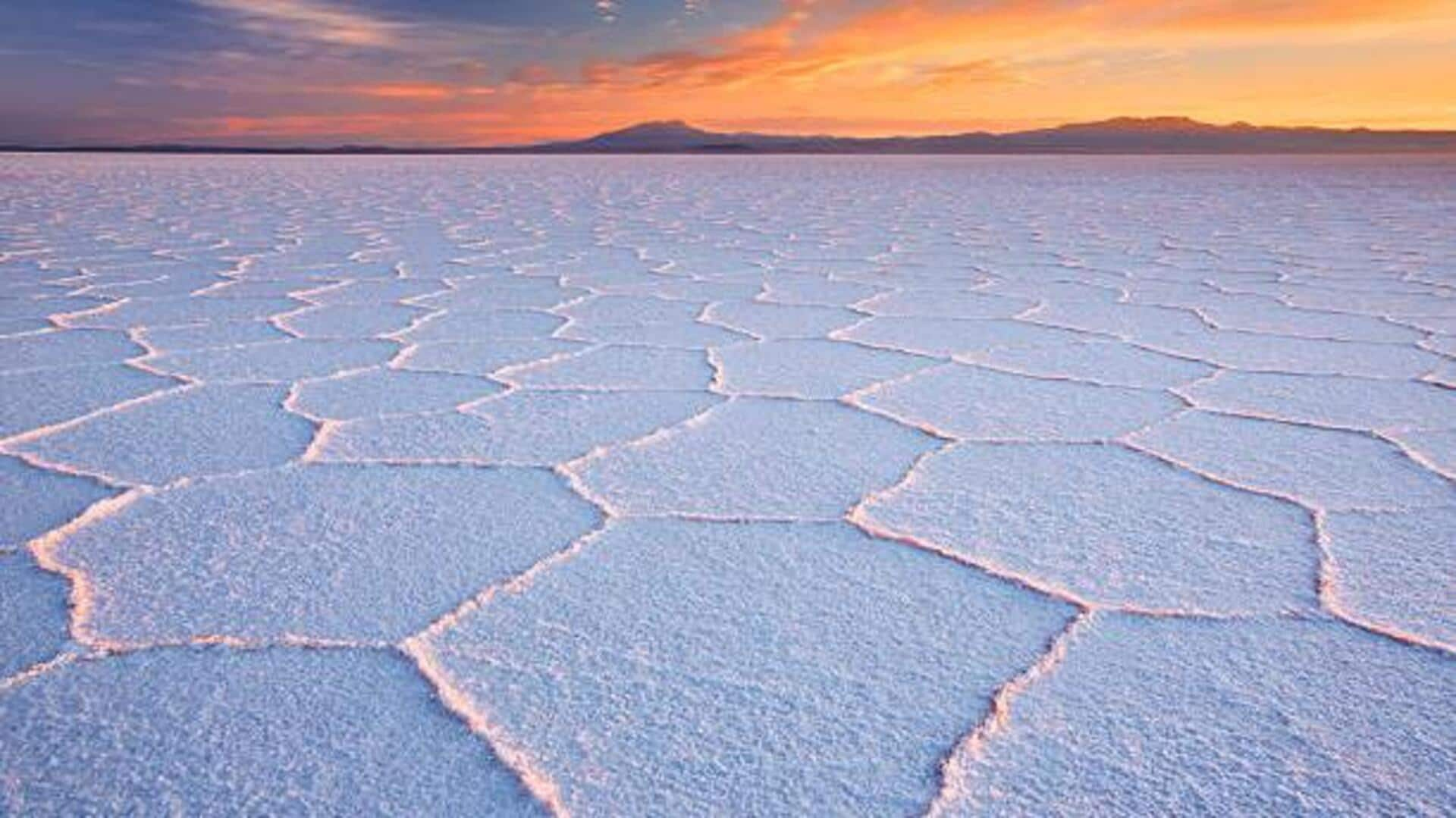
Africa's most amazing salt pans: A list
What's the story
If you are an explorer in search of surreal adventures, look no further than African salt pans. These vast, flat expanses of salt-crusted earth create an otherworldly environment that is as much difficult as it is rewarding to trek. From shimmering mirages to the stark beauty of the terrain, these salt pans are nothing short of a once-in-a-lifetime experience for those willing to brave their remote reaches.
#1
The Makgadikgadi Salt Pans experience
The Makgadikgadi Salt Pans in Botswana are some of the largest in the world (they're bigger than Switzerland). In the dry season, they become an empty yet beautiful terrain. Visitors can explore via quad bike or on foot, experiencing the stunning sunsets and starry skies. The pans also host fascinating wildlife such as meerkats and flamingos during particular times of the year.
#2
Navigating Etosha Pan's unique terrain
Etosha Pan in Namibia is another amazing place for those who love adventure. The massive salt pan, which is a part of Etosha National Park, features an unusual ecosystem full of wildlife including elephants and lions. While the pan remains mostly dry, it fills with water during the rainy season, luring a number of birds. A tour here speaks volumes about how life survives in extremes.
#3
Sowa Pan's flamingo spectacle
Sowa Pan in Botswana turns into a riot of color as thousands of flamingos flock here during their breeding season. This stunning spectacle happens when seasonal rains fill the pan with water, providing perfect conditions for the birds to flourish. Watching the gathering gives you a rare glimpse of one of nature's most beautiful spectacles, amidst a sea of white plains.
Tip 1
Tips for visiting African salt pans safely
When planning your adventure to African salt pans, remember to prepare well, as they are located in remote areas and the conditions can be harsh. Take enough supplies with you, including water, food provisions that can last long without refrigeration or cooking (fruits, for example), sun protection gear (hats, sunscreen lotion with high SPF ratings - 30% or more), and reliable navigation tools (GPS devices/maps), as mobile signals can be weak/nonexistent in certain areas.